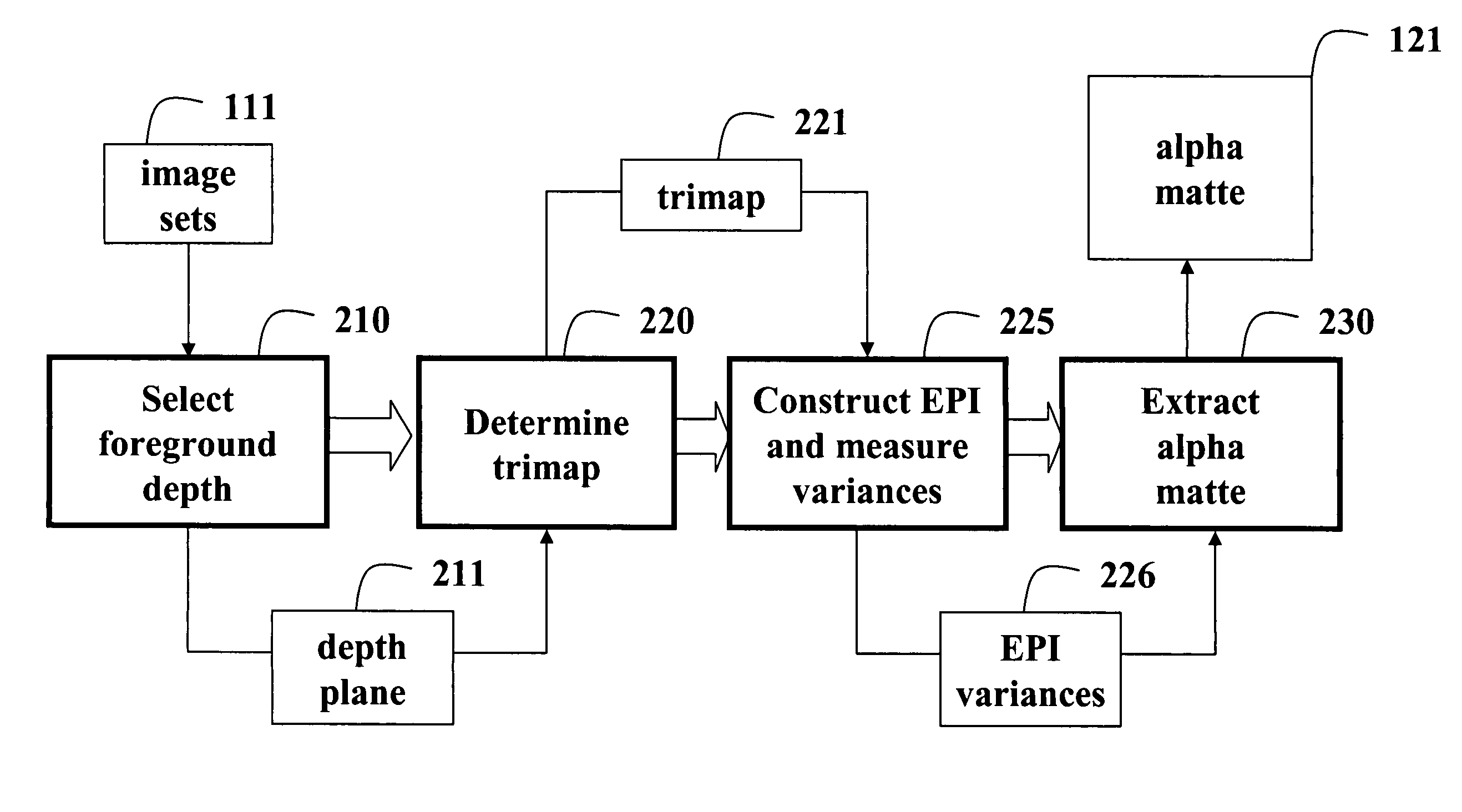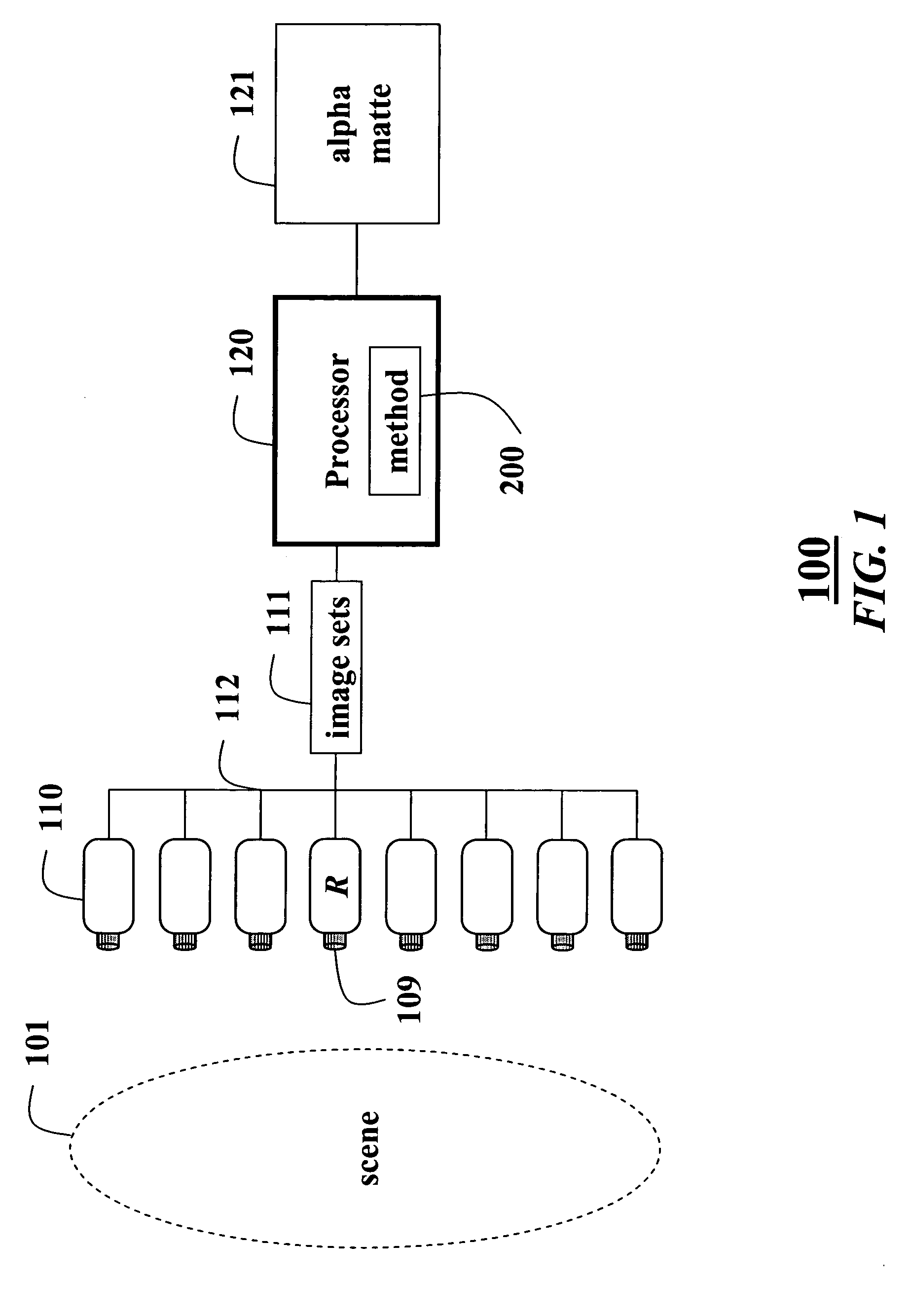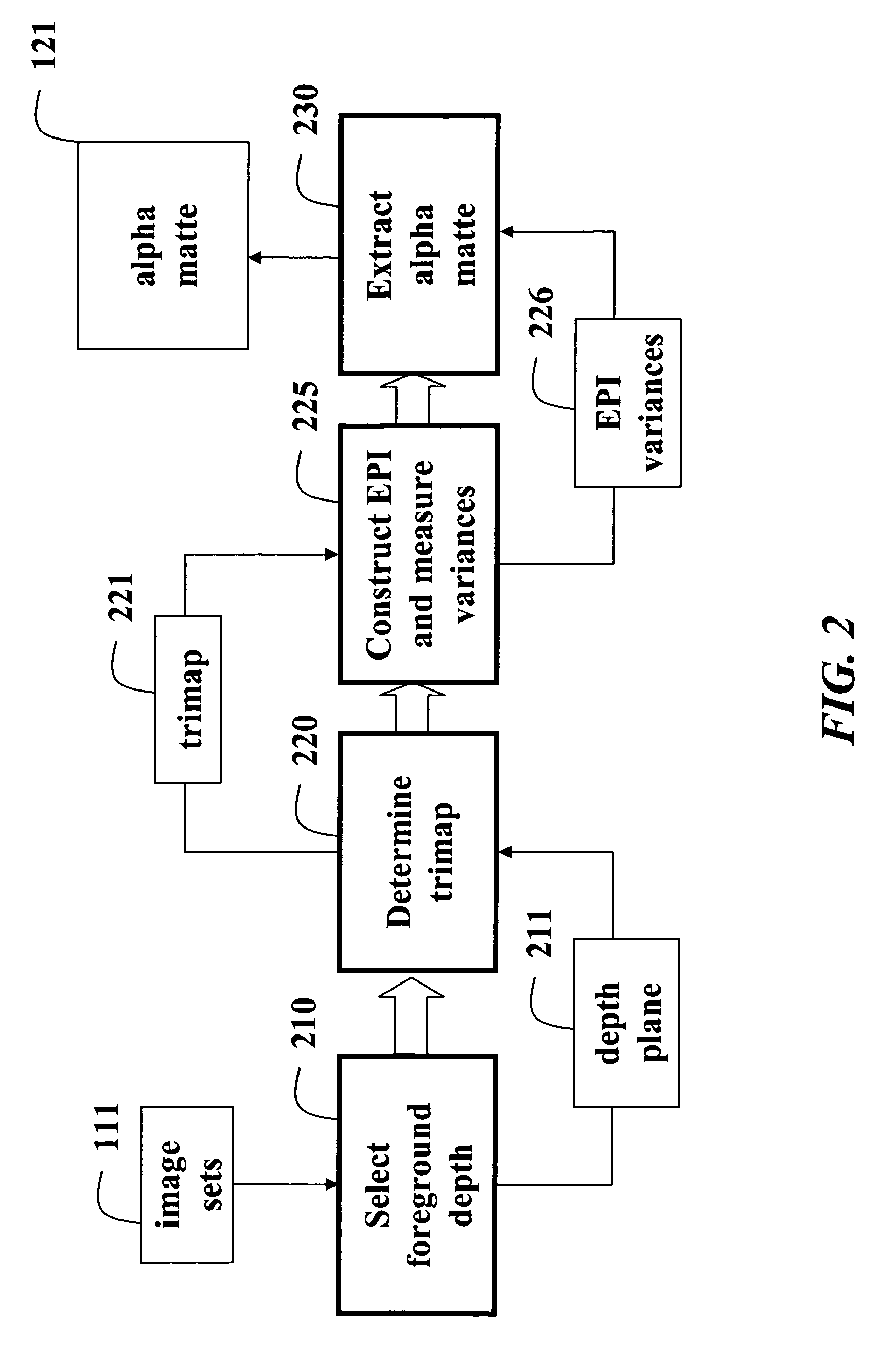Matting using camera arrays
a technology of arrays and cameras, applied in the field of processing images acquired by cameras, can solve problems such as the method working with arbitrarily complex background scenes
- Summary
- Abstract
- Description
- Claims
- Application Information
AI Technical Summary
Benefits of technology
Problems solved by technology
Method used
Image
Examples
Embodiment Construction
[0027]FIG. 1 shows a system 100 for extracting an alpha matte according to an embodiment of the invention. A linear array of synchronized cameras 110 acquires sets of images 111 of a scene 101. For example, all images in each set are acquired in parallel at a particular instant in time. Sets are acquired at up to thirty per second.
[0028]A processor 120 executes a method 200 according to an embodiment of the invention to produce the alpha matte 121.
[0029]In a preferred embodiment, we use eight cameras arranged linearly along a horizontal axis. It should be noted that a second linear array of cameras arranged along a vertical axis can also be used. That is, the method and system can work with any arrangement of cameras as long as centers of projections of the cameras are co-planar, i.e., the centers are on an identical virtual plane.
[0030]It should be understood that more or fewer cameras can be used. A resolution of each camera is 640×480 pixels in a Bayer pattern. The cameras have e...
PUM
 Login to View More
Login to View More Abstract
Description
Claims
Application Information
 Login to View More
Login to View More - R&D
- Intellectual Property
- Life Sciences
- Materials
- Tech Scout
- Unparalleled Data Quality
- Higher Quality Content
- 60% Fewer Hallucinations
Browse by: Latest US Patents, China's latest patents, Technical Efficacy Thesaurus, Application Domain, Technology Topic, Popular Technical Reports.
© 2025 PatSnap. All rights reserved.Legal|Privacy policy|Modern Slavery Act Transparency Statement|Sitemap|About US| Contact US: help@patsnap.com



